I have two tables in PostgreSQL, class and inheritance.
Each row in inheritance has 2 class IDs source_id and target_id:
CREATE TABLE public.class (
id bigint NOT NULL DEFAULT nextval('class_id_seq'::regclass),
name character varying(500) COLLATE pg_catalog."default" NOT NULL,
CONSTRAINT class_pkey PRIMARY KEY (id)
)
CREATE TABLE public.inheritance (
id bigint NOT NULL DEFAULT nextval('inherited_id_seq'::regclass),
source_id bigint NOT NULL,
target_id bigint NOT NULL,
CONSTRAINT inherited_pkey PRIMARY KEY (id),
CONSTRAINT inherited_source_id_fkey FOREIGN KEY (source_id)
REFERENCES public.class (id),
CONSTRAINT inherited_target_id_fkey FOREIGN KEY (target_id)
REFERENCES public.class (id)
)
I want to create Access Matrix between all classes based in inheritance relationship in inheritance table. I try this code:
select * , case when id in (select target_id from inheritance where source_id=1) then 1 else 0 end as "1"
, case when id in (select target_id from inheritance where source_id=2) then 1 else 0 end as "2"
, case when id in (select target_id from inheritance where source_id=3) then 1 else 0 end as "3"
, case when id in (select target_id from inheritance where source_id=4) then 1 else 0 end as "4"
, case when id in (select target_id from inheritance where source_id=5) then 1 else 0 end as "5"
, case when id in (select target_id from inheritance where source_id=6) then 1 else 0 end as "6"
, case when id in (select target_id from inheritance where source_id=7) then 1 else 0 end as "7"
, case when id in (select target_id from inheritance where source_id=8) then 1 else 0 end as "8"
, case when id in (select target_id from inheritance where source_id=9) then 1 else 0 end as "9"
from class
and get the right answer, but it's just for 9 static rows in class.
How can I get all number of rows in class using a dynamic SQL command?
If we can't do it with SQL, how can we do it with PL/pgSQL?
